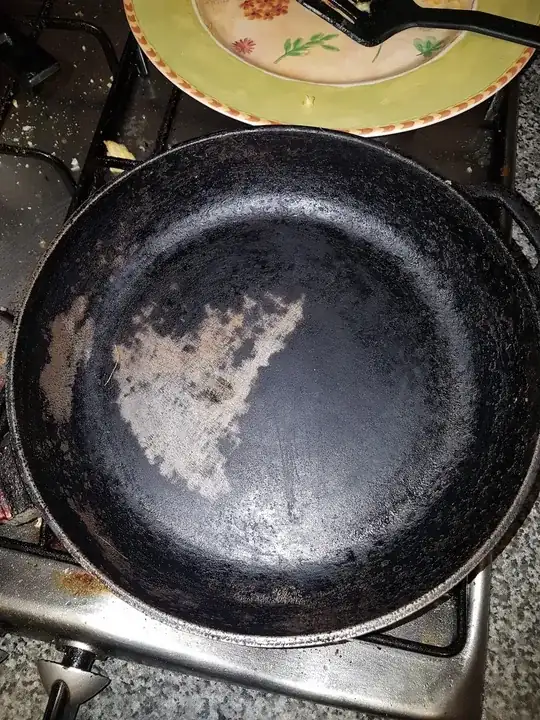Whilst the re-seasoning part could be considered a duplicate, that's not actually what this question asks. It's "What do I do with the existing surface?"
You sand it off, or you get it sandblasted professionally (or you get all chemistry class with lye baths & other potentially dangerous stuff;).
The cosmetic appearance is not vital, but your pan has built up a coating so thick that it can start to come off in chunks.
This is your opportunity to start afresh, so I'd try to get it as close to bare metal as you reasonably can, without being over-fussy about the last vestiges. As your start-point for the new seasoning you want an even surface, rather than a 'perfectly clean' one. New seasoning will stick just as well to remaining coating as it will to bare iron, so long as you re-season properly.
For that part I'd see some of the previous answers on this stack - but note, there appears to be no true consensus as to temperature, duration, oil type...
